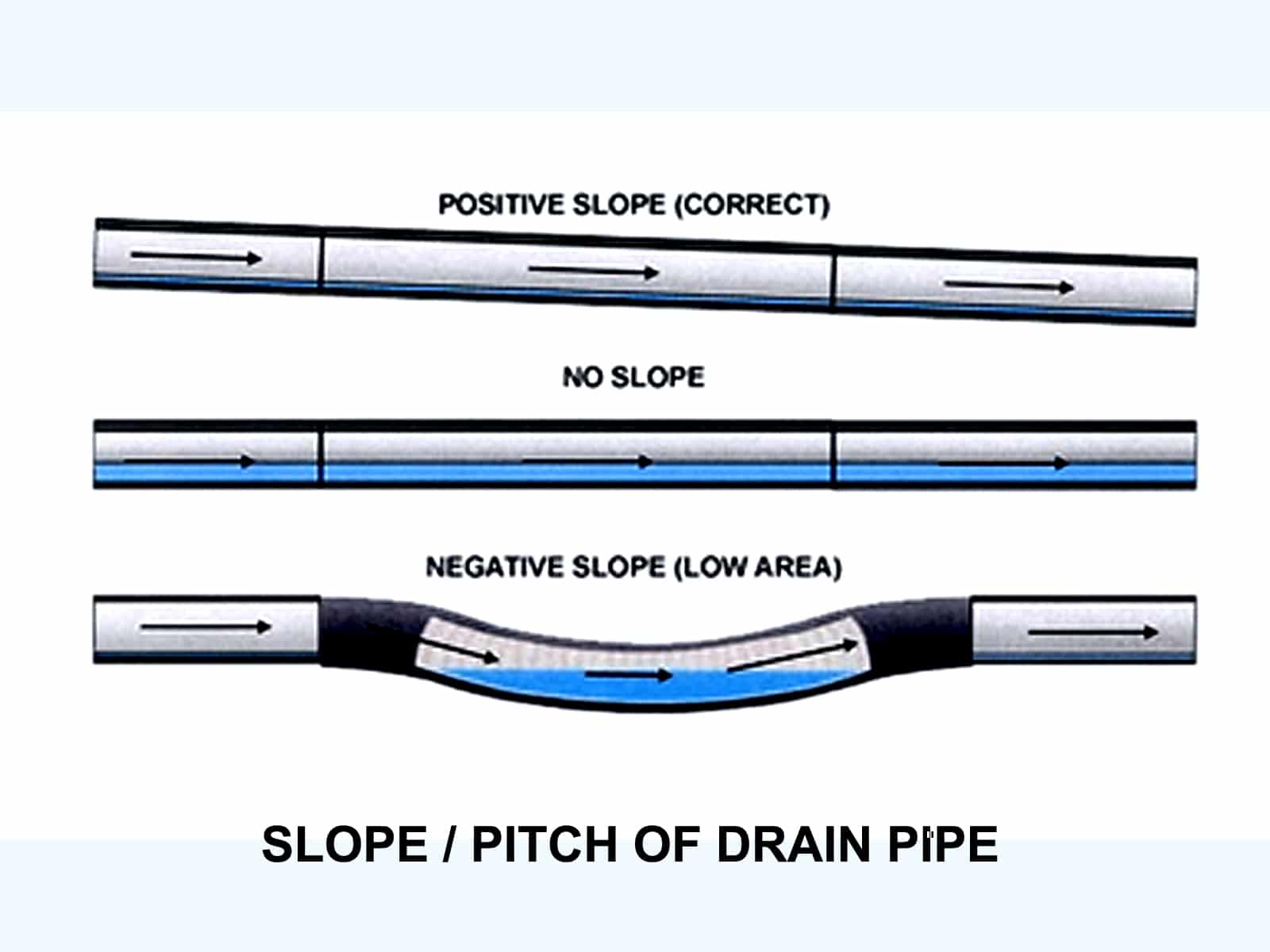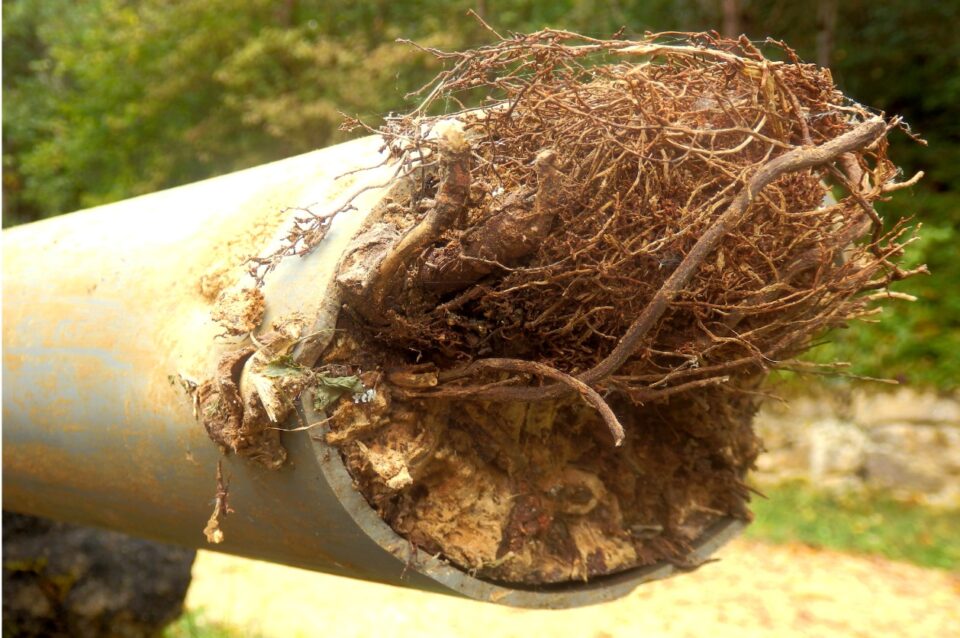A septic system is a relatively new sewage treatment system developed as an improvement over the older cesspool model. Cesspools were prominent prior to 1973. Such systems were primarily used for homes, and buildings where no public sewer system existed. These systems consisted mainly of a drain pipe, used as a conduit, installed from the house toward a cesspool. Which is exactly the same as a typical sewer system, just not terminating at a public sewer. That is the 1st basic piece of useful septic system information.
In 1973, cesspools were becoming less popular in favor of the more environmentally friendly septic system. Older cesspool models usually had only a single pit made of concrete blocks, cinder blocks, or solid concrete rings. This is where the entire natural filtration processes took place. While a septic system is a little bit more sophisticated with more components.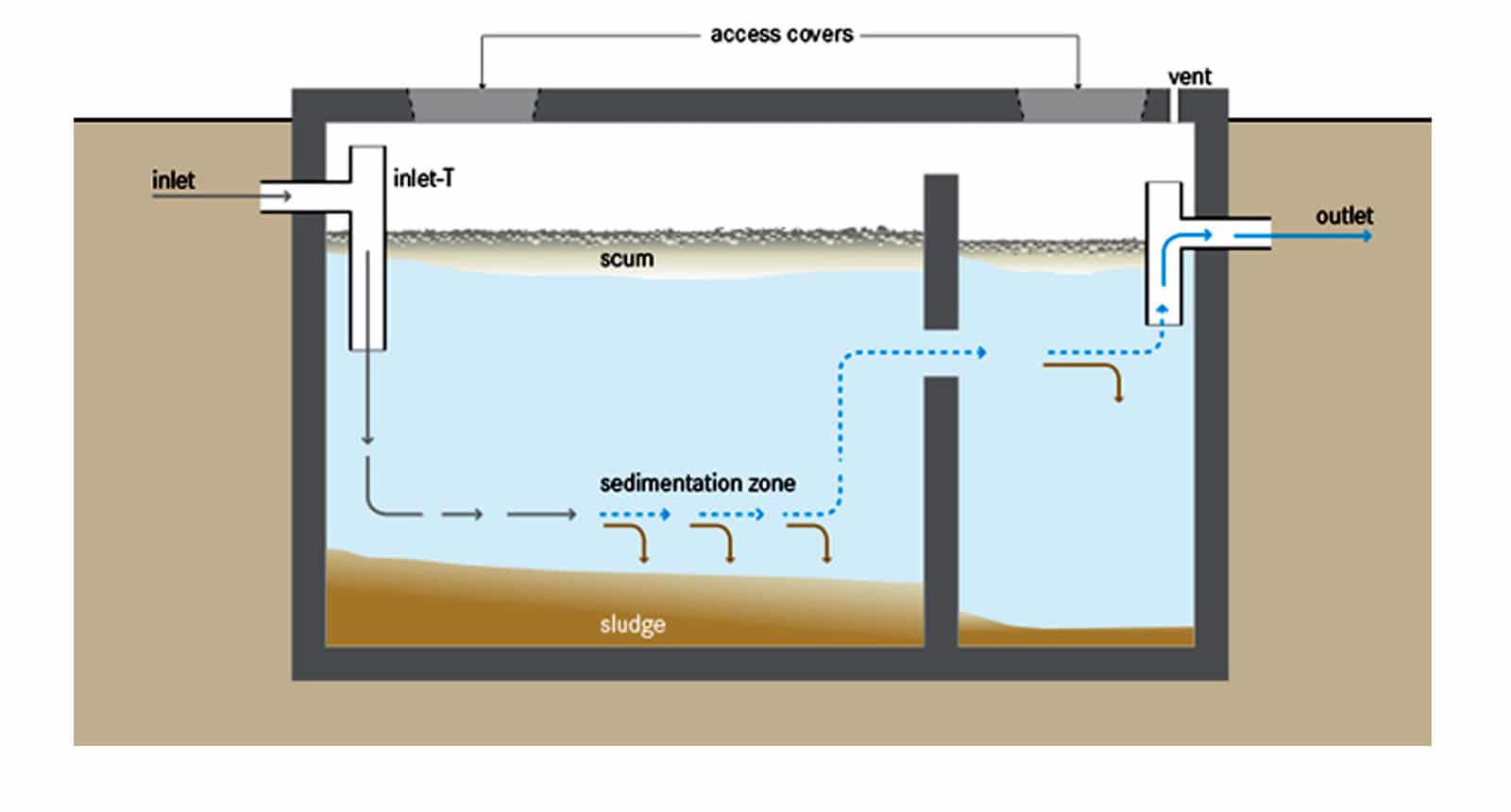
The physical integrity of a cesspool
The tank, or cesspool itself, is made of cement block, concrete, or brick construction. They can collapse over time as mortar wears away, or the structure itself deteriorates. In many cases the water in the tank itself exerts outward pressure, which holds the walls of the tank in place. An empty tank can collapse more easily than a full tank. Either way, a collapsed septic system will need replacement immediately afterwards. If you have a collapsed cesspool, and you don’t have a septic tank already installed, a completely new system must be built. Adding a leach field to an existing cesspool is not recommended; it is not even allowed in many areas.This is also vital septic system information to be aware of.
Assuming you cannot find a new space for the installation of a new septic tank (including the leach field), a local inspector can help determine the best location for each component to be installed. Certain important things should be kept in mind:
- Septic system tanks must be installed a minimal distance from any structure (such as your home). Typically that is at least 15′.
- Soil conditions must be fully tested for permeability. Different soil types absorb water at vastly different rates.
Depending on the location of the approved area, you may need to rearrange or reposition the existing plumbing line running from the house. This project may require a building permit. Needless to say, only hire licensed professional plumber to do the jobs.
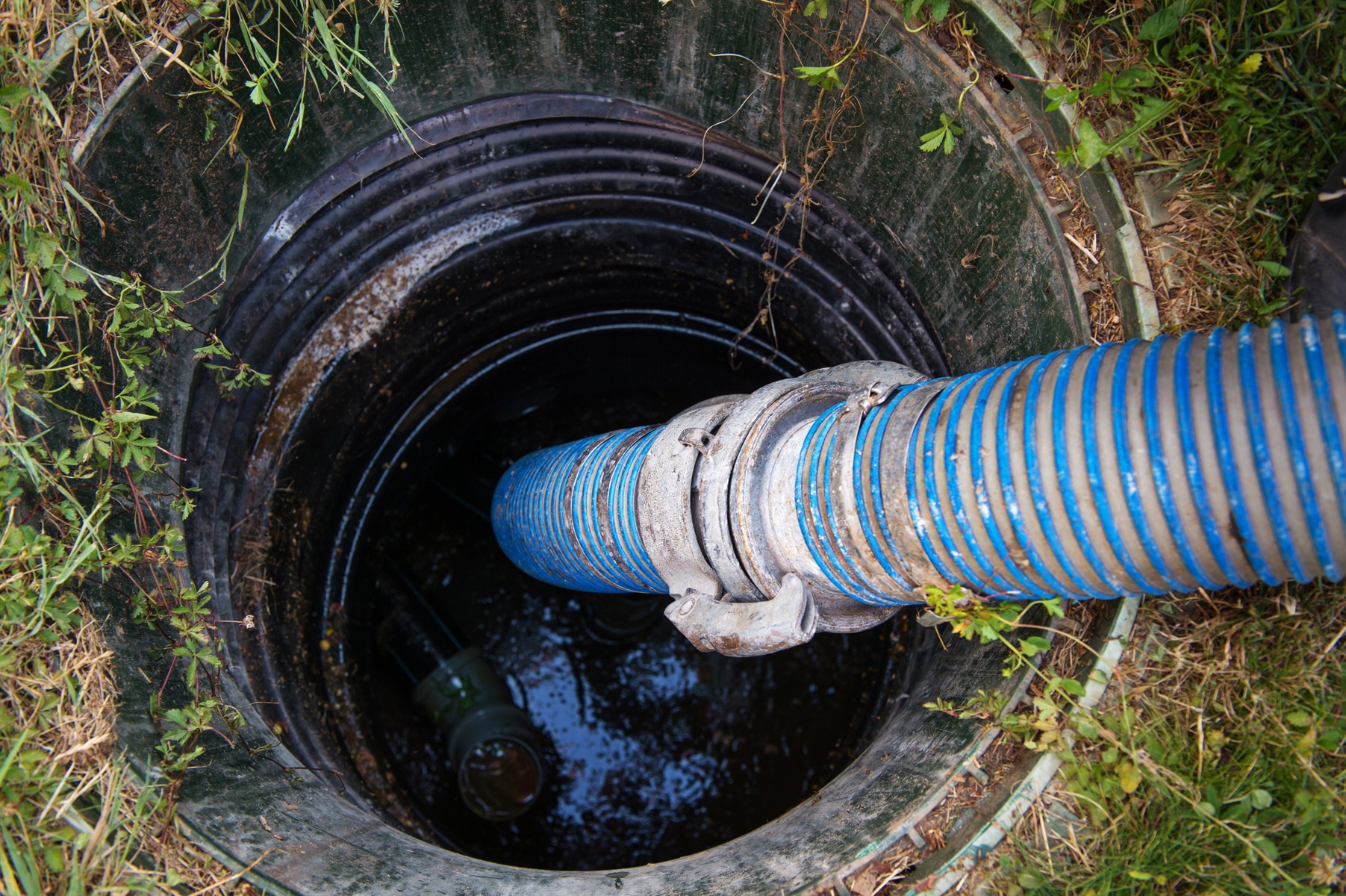
A Cesspool as a waste disposal system
A cesspool collects sewage and other types of wastewater in a single chamber. Naturally the heaviest portion of the wastewater (or the dirtiest) forms at the bottom of the pit. This bottom part is called sludge. Lighter materials, for example soap and grease, float on the surface, known as scum. The (relatively) cleanest volume of the wastewater is in between those two layers. Bacteria break down the bottom and top layers of the wastewater in the pit, and residual liquid is discharged into the environment to undergo more filtration. Eventually, liquids from all three layers seep into the ground.
A Septic System
On the other hand, a septic system keeps the heaviest or dirtiest part of the wastewater at the bottom of the pit. The system consists of one or more plastic or concrete tanks. Each tank can contain between 1000 and 2000 gallons of wastewater. One tank is connected directly into the building drain pipe, and another to a leach field. Only the partially treated wastewater is released into an area called a leach field. This means a septic tank may require more maintenance and regular draining, but the residual liquids released are much cleaner. The fact that the waste water is cleaner than that of a cesspool is another important piece of septic system information.
How many homes use a septic system?
About a quarter of all homes in the United States use septic system. These may be located in rural areas, or areas not yet serves by a public sewer system. Some properties are far from a connecting point, so connecting to a public sewer can be a financial hardship. These properties are not connected to the more modern wastewater treatment facility, but rely on natural water filtration process instead. In regards to home sewer waste, a septic system vs. a public sewer system each has its own attributes.
Over four billion gallons of partially treated wastewater are released into the ground on any given day. This volume of waste water does present a great risk of contamination to groundwater. A septic system is privately owned and run by homeowners. Proper care and periodic cleaning are crucial to minimize chances of pollution and widespread of diseases. Another bit of local septic system information is that less than 10% of Long Island homes are still using a septic system. As a for instance, even a small village like Great Neck Plaza has full access to a public sewer system. In NYC proper, an active septic system is rare indeed.
Septic system information regarding maintenance
A typical septic system must be drained and cleaned once every two years (or sooner) by professionals. However, this is only a general guideline. To learn more read: About Septic Tank Maintenance. You must consider the following factors to determine how often you should perform thorough maintenance:
- Number of people in household
- Septic tank size
- The amount of wastewater produced
- Estimated volume of solids at the bottom of the tank.
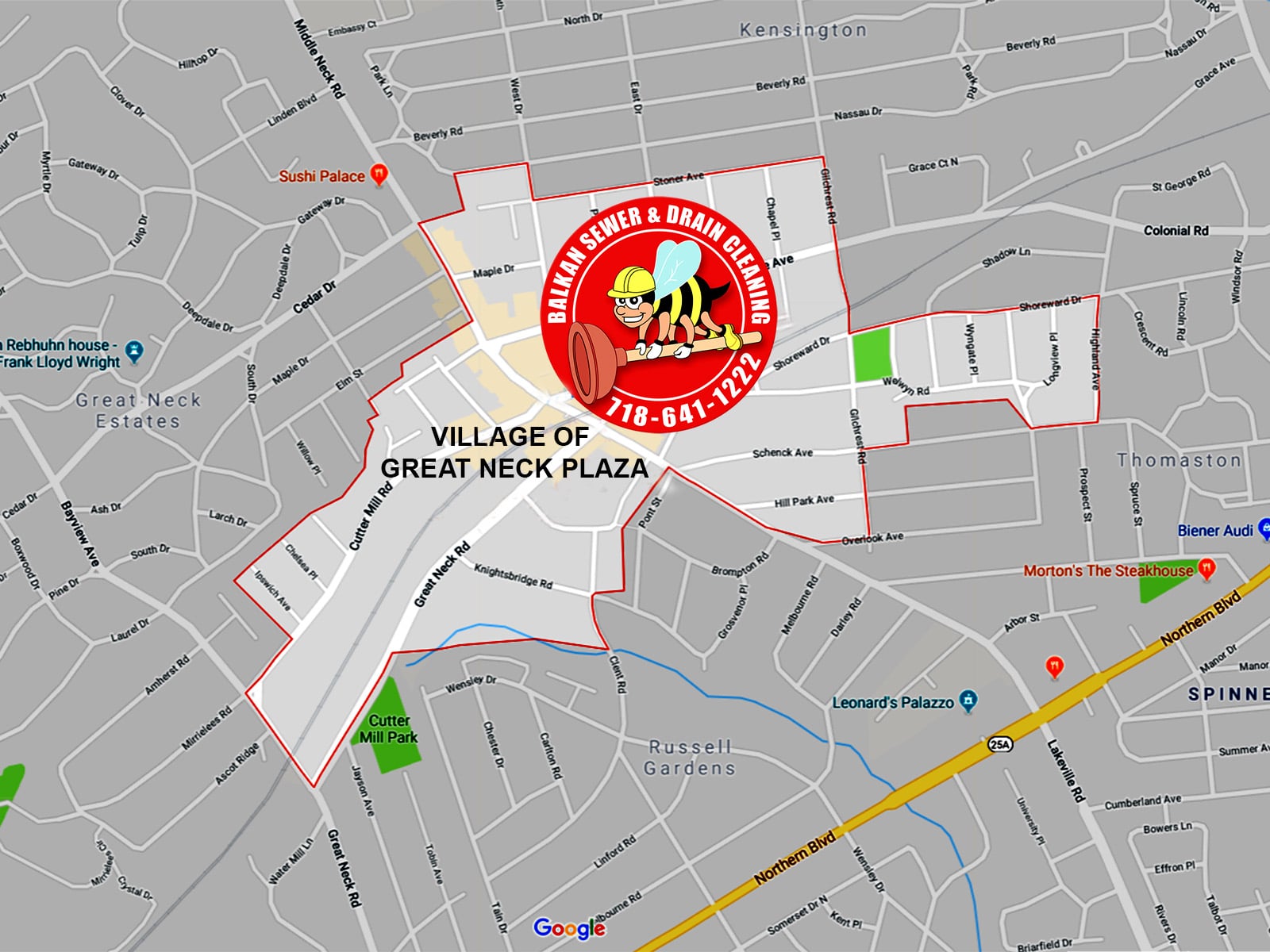
A Little Bit About Village of Great Neck Plaza
Great Neck Plaza is a village inside the Town of North Hempstead. This area is considered the North Shore of Long Island, inside the Nassau County. The population of the Village of Great Neck Plaza is just over 7,000 people, and it was incorporated in 1930. A vital event to the growth of the village was when the railroad was extended to it in 1866. This event transformed in form a farming community, into a commuter town. This is very common and shared history for many of Long Island’s villages and towns.
The small geographical size of Great neck Plaza belies its vibrancy, and breadth of commercial activity. Inside its only 1/3 of a square mile area are home to over 260 shops and stores, and two parks. The village is a hub for the Long Island Railroad, and its main commercial strip is Middle Neck Road.

